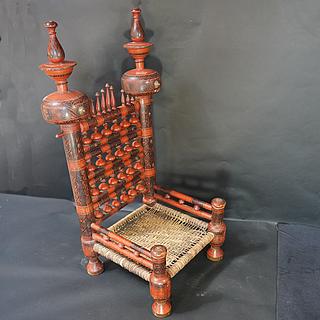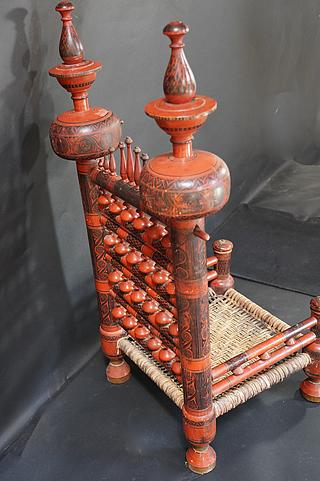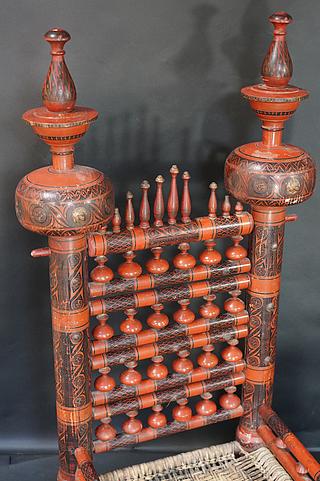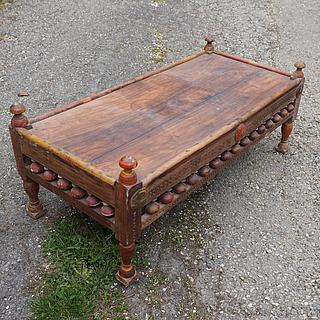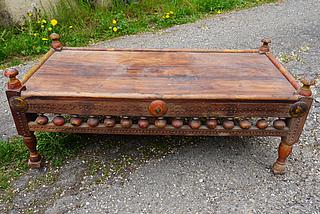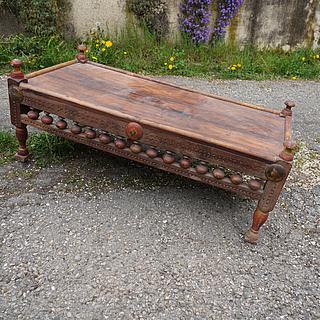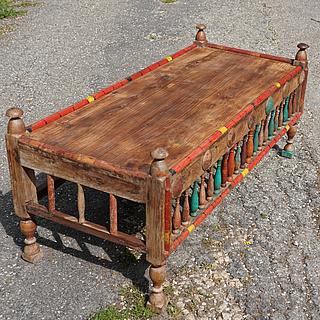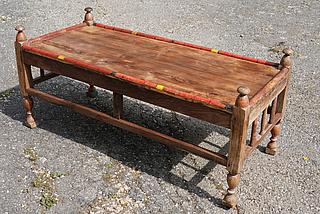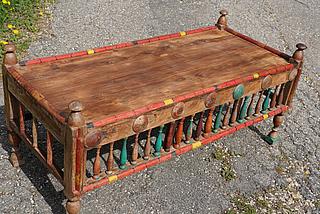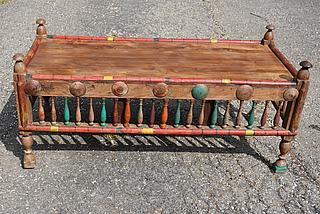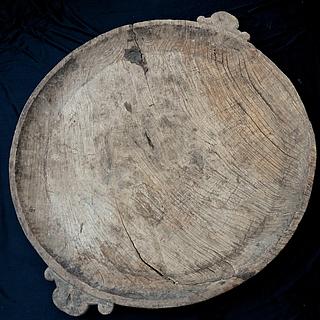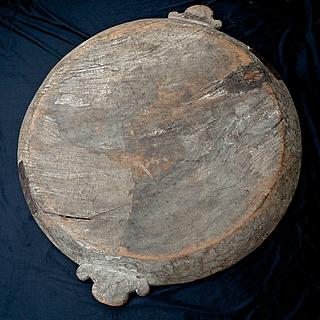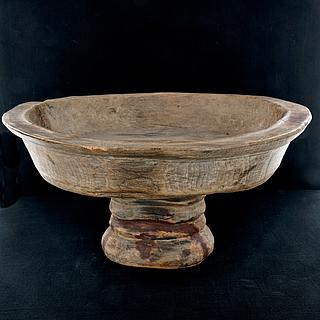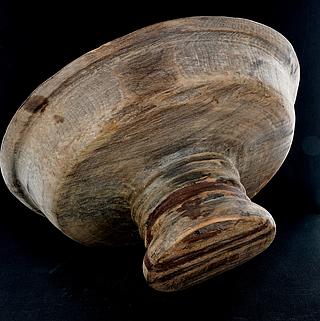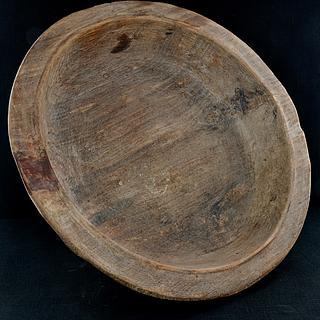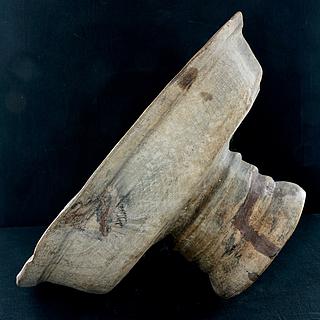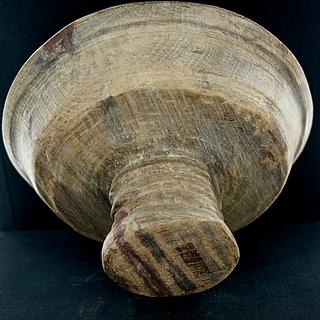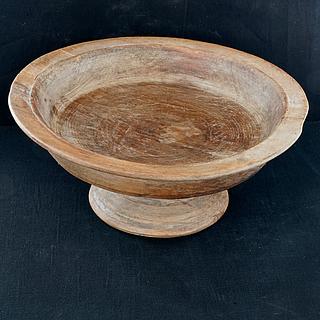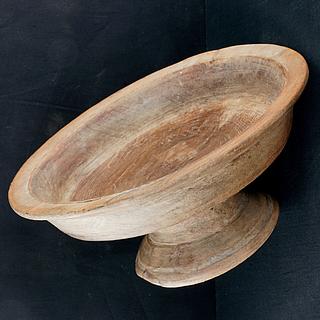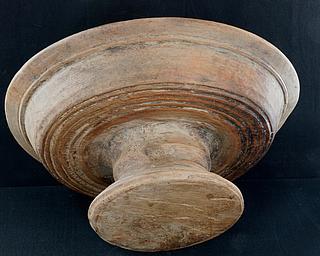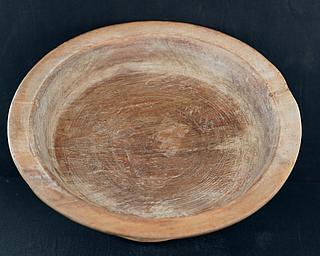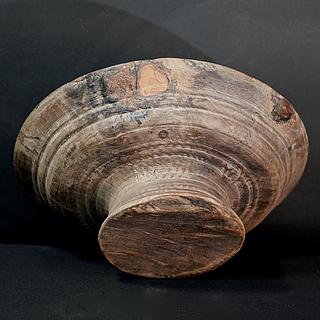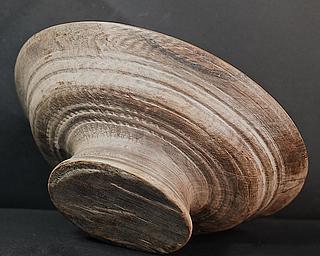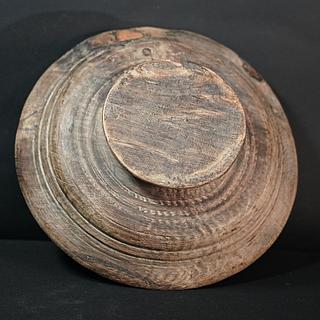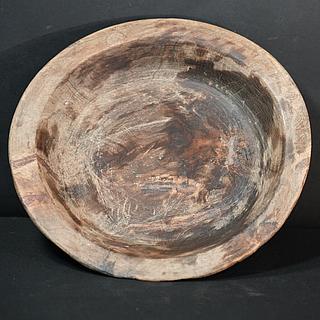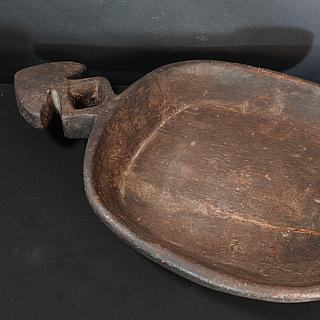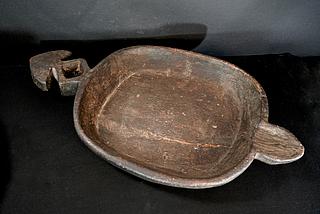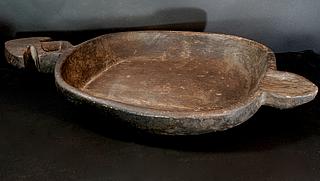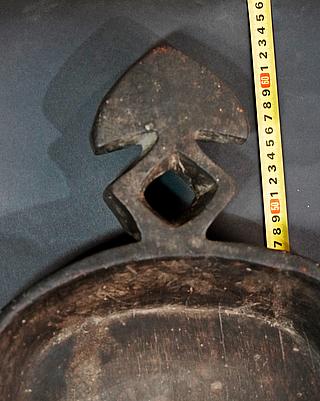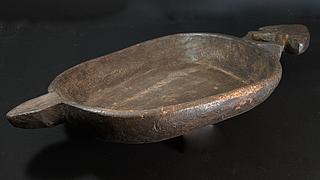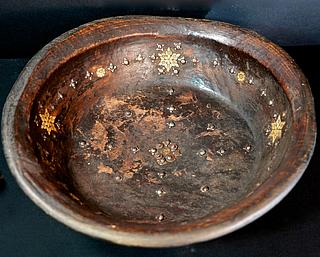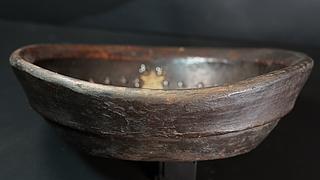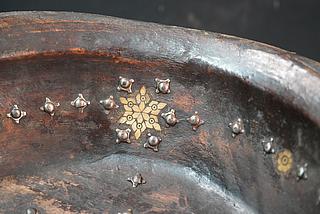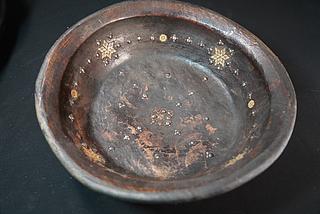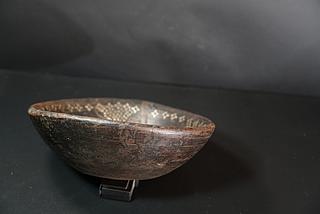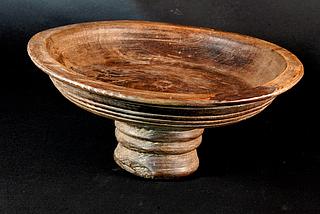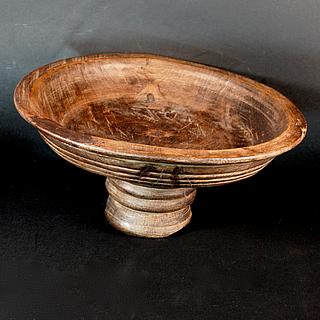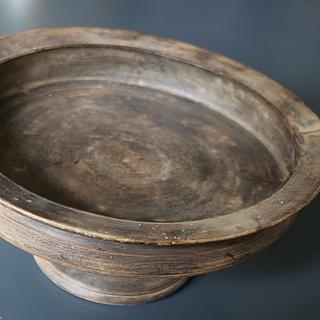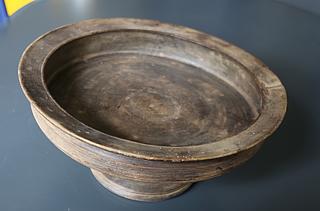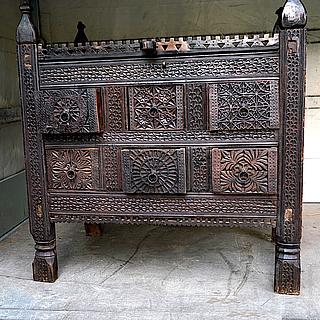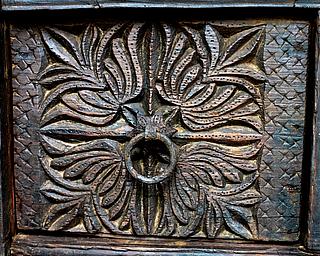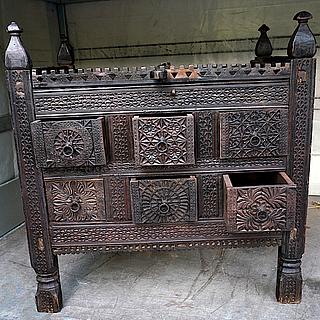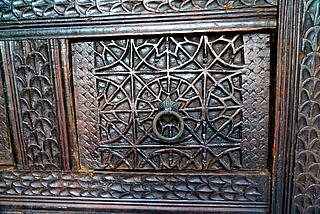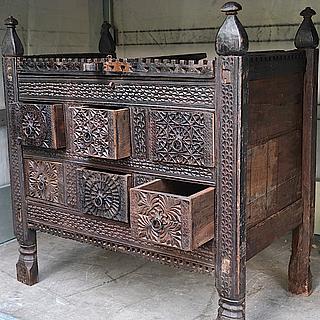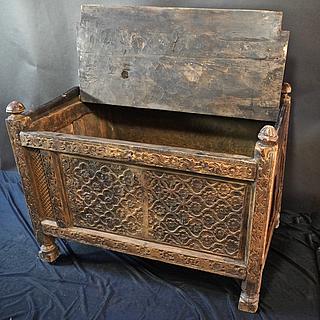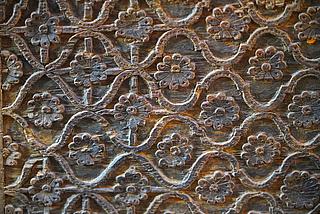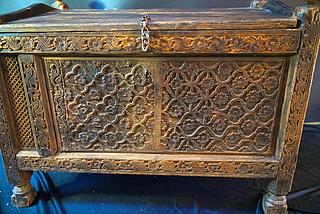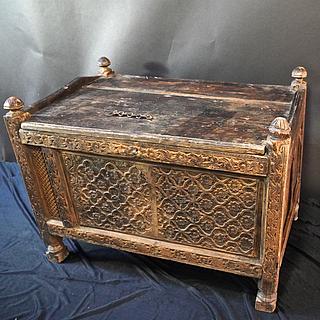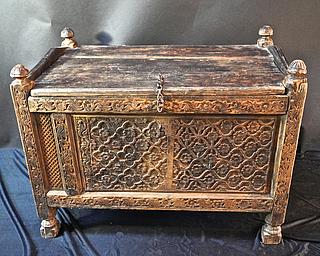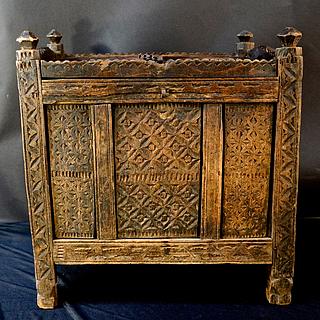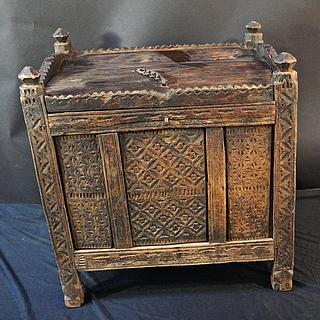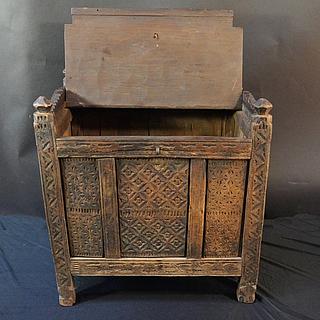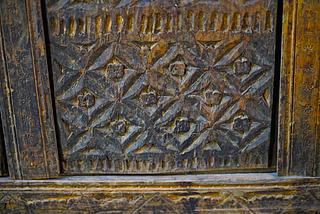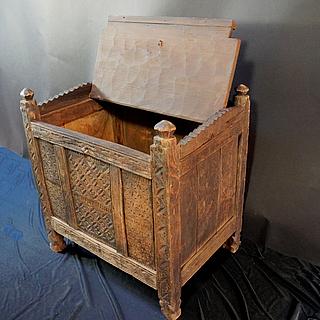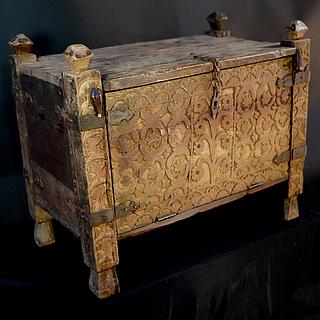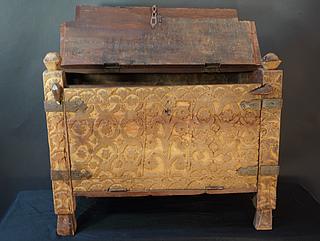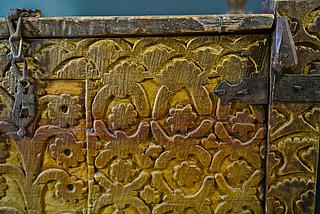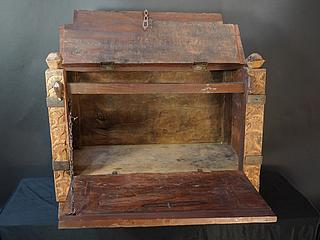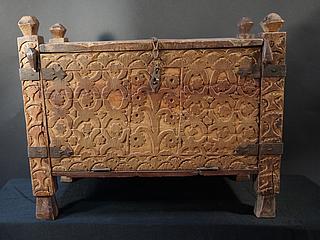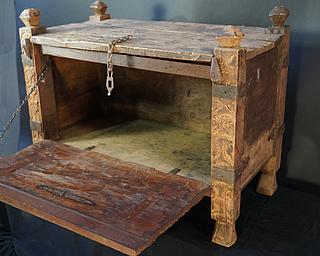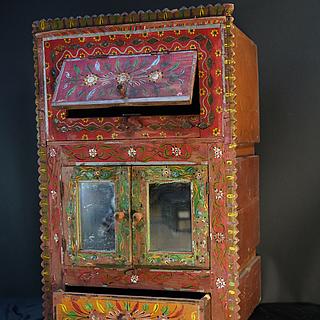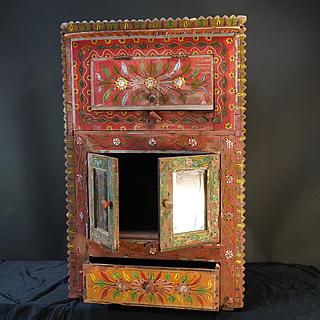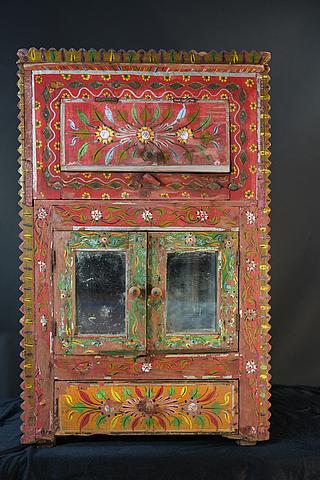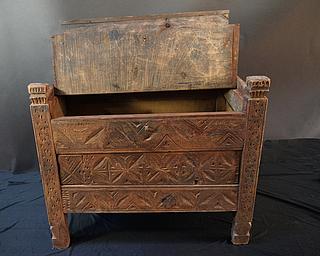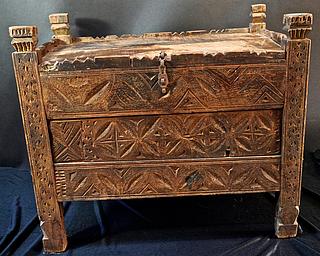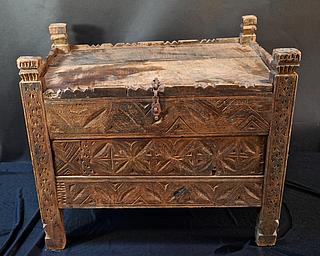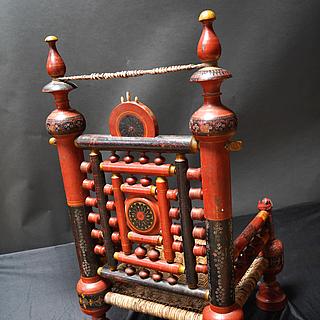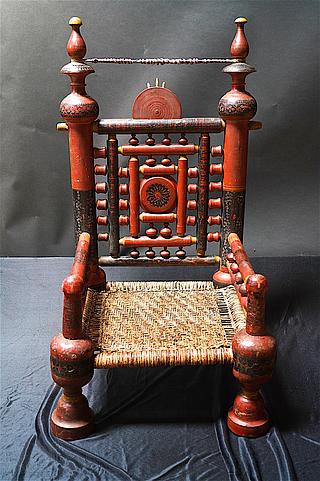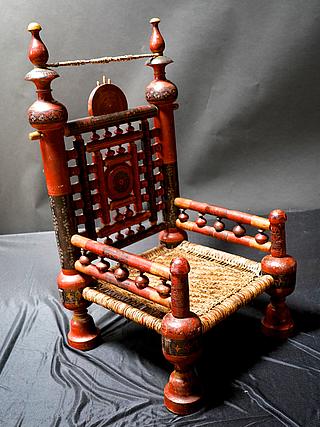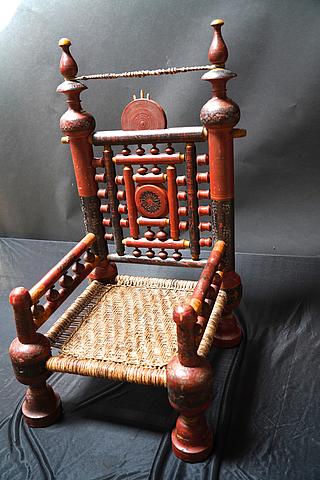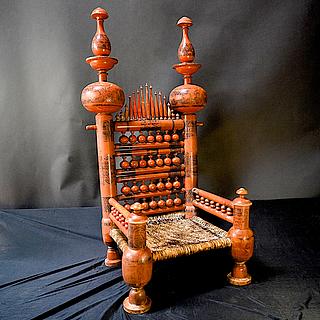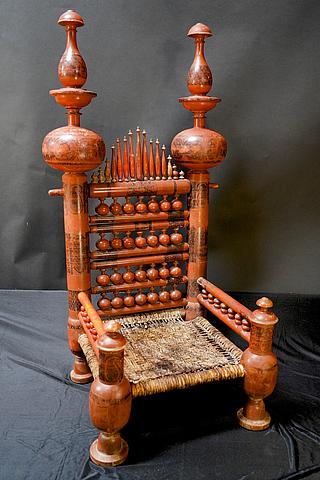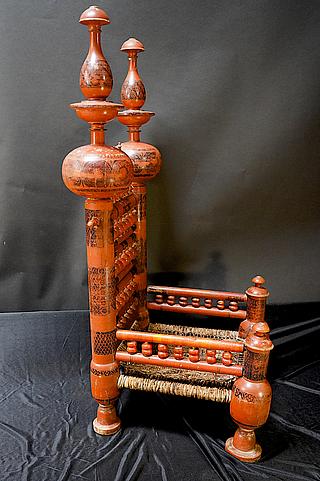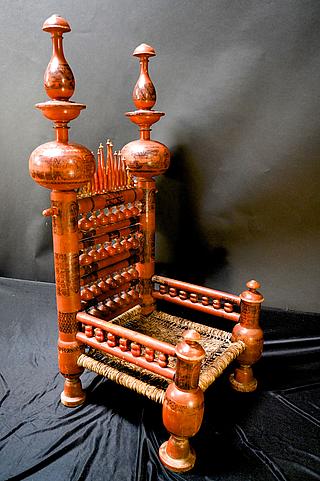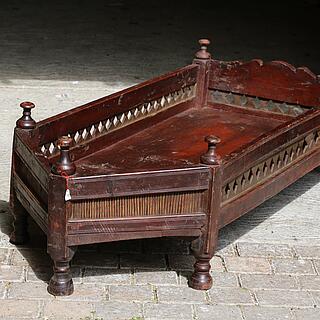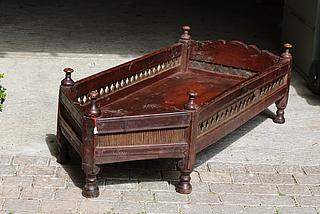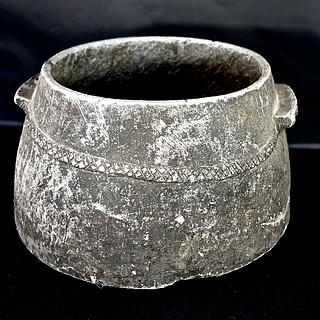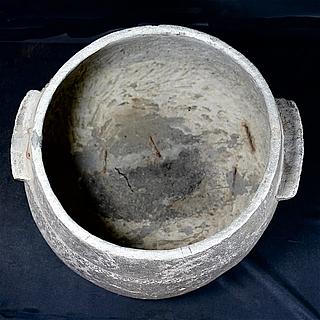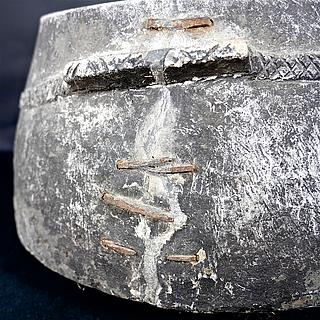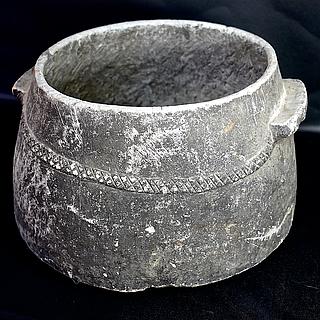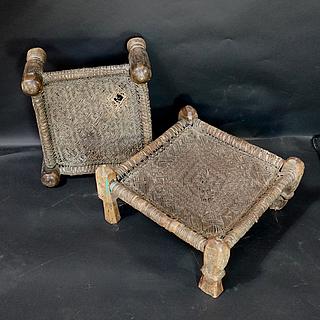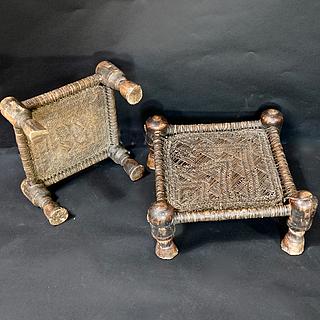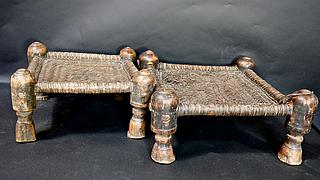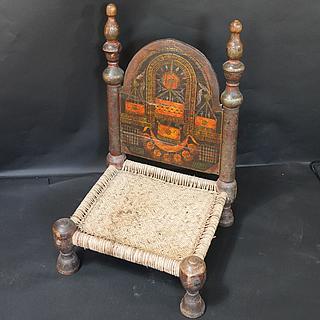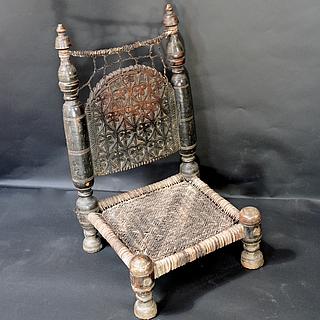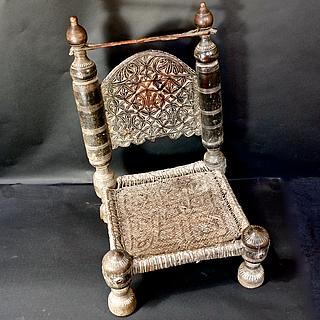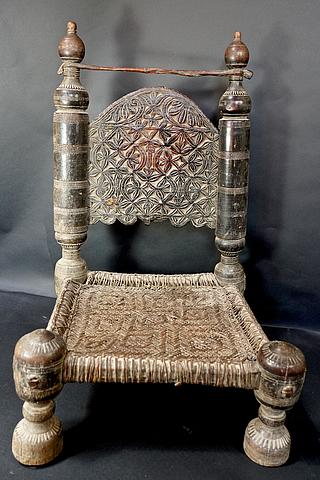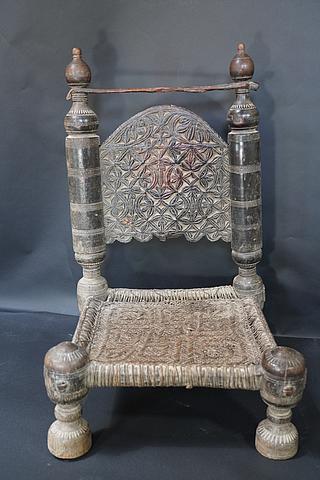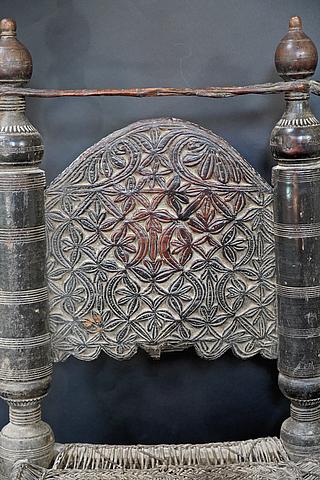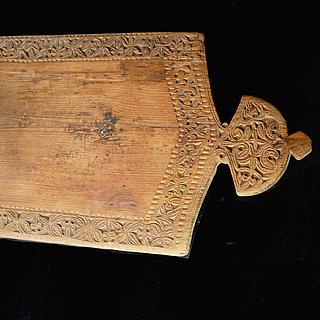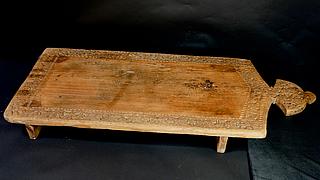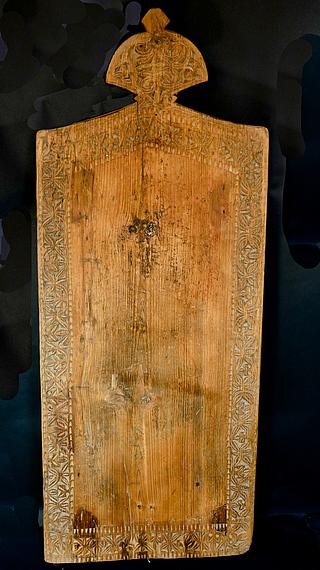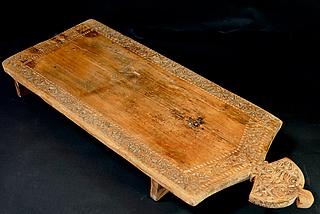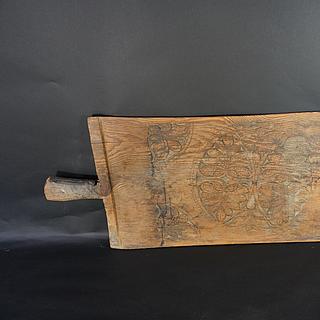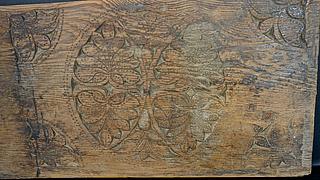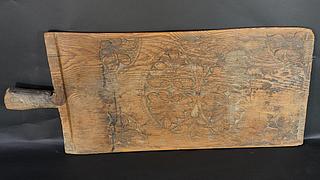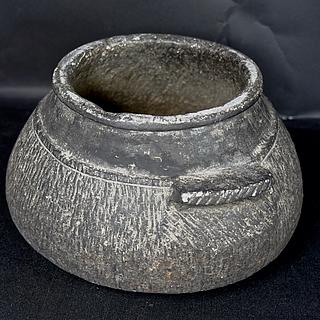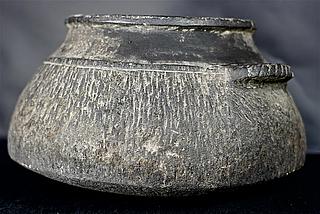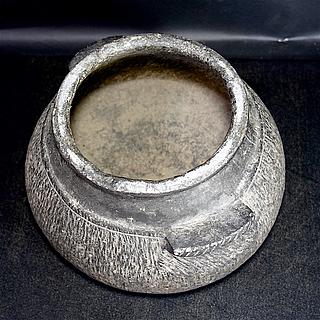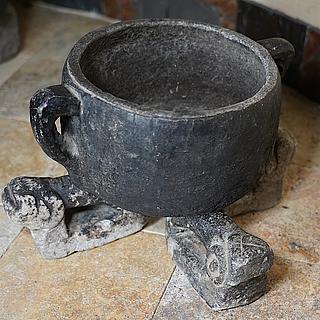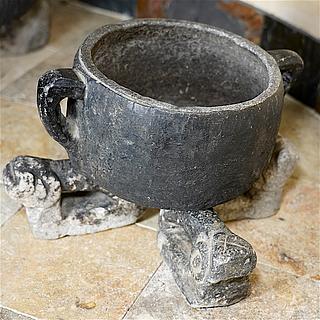Furniture & Architecture elements 16 / Furniture and artefacts of the Swat valley 16.01 Your search result
Sorting
Refine your search

Reference
Category
Origin
Material
Quality
Timber was plentiful in the wooded mountains of the Hindu Kushvovered by Himalayan cedar trees. The culture of the Pathans in...read more
Timber was plentiful in the wooded mountains of the Hindu Kushvovered by Himalayan cedar trees. The culture of the Pathans in the upper Swat Valley was, until a few years ago, decidedly a 'culture of wood: mosques, houses and boxes, coffers, beds and everything, including the smallest spoon, was produced in wood. The most favoured timber was Himalayan cedar, because of its resilience, strength and its pleasant smell. Other commonly used woods are evergreen oak and walnut. Unlike their counterparts in neighbouring cultures the woodworkers in Swat valley, as in Nuristan, occupied a respectable middle position as craftsmen in the hierarchical Pathan society. Most of the skilled woodworkers and carvers are full-time craftsmen. According to Lühe, a specific division of labour has also developed. While coarse work (beams, boards, doors, etc.) were done by one group a second group specialised in turning the legs of beds, tables and chairs and the production of wooden vessels. A third group did the carving. Many of the motifs used in Swat Valley wood carving are derived from symbols whose roots can probably be traced back to prehistoric times. Two main reasons led to the disappearance of the "wood-culture". First the deforestation and second the fact that mountain villages moved down close to the tared main roads where the houses were built in concrete. Kalt reports that in 1988 they were no more skilled carvers in the villages he visited. All of Swat valley items have been bought during my two trips to the Swat valley in 2000 and 2003.
read lessPundjabi "wedding" chair16.01.2045
- Wood
- Collectible (fine or rare example of an object)
- Good overall conditions (small imperfections or signs of use)
- High aesthetic value
- Original condition
Old Punjabi Pakistani wedding chair hand-crafted of wood. The Chair is hand-painted in vibrant reds. Decorative painted spindles adorn the backrest and under panels of the arms. There is some minor fading of paint colour on legs and armrests and slight paint loss commensurate with age and use.
Punjabi coffee table16.01.2011
- Wood
- Collectible (fine or rare example of an object)
- Furniture
- Good overall conditions (small imperfections or signs of use)
- High aesthetic value
A lovely original tea/coffee table from Punjab (Pakistan). A hand made probably walnut wood table, with some faded paint and finished with wax.
Table Punjab16.01.1998
- Wood
- Collectible (fine or rare example of an object)
- Furniture
- Good overall conditions (small imperfections or signs of use)
- High aesthetic value
A lovely original tea/coffee table from Punjab (Pakistan). A hand made probably walnut wood table, with some faded paint and finished with wax.
Extra large wooden plate09.05.1750
This extremly 1 meter (icluding handels) round wooden plate is cared out of a single piece of wood. The largest such plate I have ever seen. Some traditional repairs, otherwise in a fait condition for its age and size.
Fruit bowl from the Hindukush09.05.1749
- Wood
- Collectible (fine or rare example of an object)
- Excellent overall condition
- High aesthetic value
- Functional household item
A one-piece round fruit dish, with a turned base. The dish was acquired in Swat Valley (Northern Pakistan).
Fruit dish Swat valley Pakistan09.05.1744
- Wood
- Collectible (fine or rare example of an object)
- Excellent overall condition
- Functional household item
- High aesthetic value
One-piece round fruit dish, with a turned base. The dish was acquired in Swat Valley (Northern Pakistan).
Swati Fruit Bowl09.05.1741
- Wood
- Antiques (object shows signs of long use)
- Collectible (fine or rare example of an object)
- Functional household item
- Good overall conditions (small imperfections or signs of use)
- High aesthetic value
A one-piece round fruit dish, with a turned base. It has nice decorations party, vanished by prolonged use, and some traditional repairs which contribute to the attractiveness of this item. The dish was acquired in Swat Valley (Northern Pakistan).
Large Swati plate09.05.1715
- Wood
- Fair condition (some missing, broken or repaired parts, see pictures)
- Functional household item
- Good overall conditions (small imperfections or signs of use)
Large wooden Swati plate09.05.1714
- Wood
- Metal
- Antiques (object shows signs of long use)
- Museum quality (worthy to be added to a museum’s permanent collection)
- High aesthetic value
- Functional household item
This is a beautiful large antique wooden bowl with lovely traditional metal inlays. The bowl has a lovely patina and sign of continued intensive use. An excellent piece for any collection.
Fruit Bowl Swat valley09.05.1712
- Wood
- Collectible (fine or rare example of an object)
- Excellent overall condition
- Functional household item
- High aesthetic value
One-piece round fruit dish, with a turned base. The dish was acquired in Swat Valley (Northern Pakistan).
Wooden fruit plate, Northen Pakistan09.05.055
- Wood
- Excellent overall condition
- Functional household item
- High aesthetic value
One-piece round dish, with a turned base. The dish was acquired in Swat Valley (Northern Pakistan).
Large Bajawari chest with six drawers16.01.1579
- Wood
- Antiques (object shows signs of long use)
- Good overall conditions (small imperfections or signs of use)
- Furniture
Beautiful wood work. The original chest has been transformed to hold 6 drawers and an upper compartiment under the upper cover.
Jalabad Chest - Pakistan16.01.1564
Jalalabad Chest - Pakistan16.01.1563
- Wood
- Antiques (object shows signs of long use)
- Good overall conditions (small imperfections or signs of use)
- Original condition
Painted small cupboard Sind16.01.1565
Punjabi chair16.01.1572
- Wood
- Collectible (fine or rare example of an object)
- Functional household item
- Good overall conditions (small imperfections or signs of use)
- High aesthetic value
A Traditional Punjabi Low Chair. PAKISTAN. A brilliantly decorated Punjabi tribal chair. Ornate hand-painted designs decorate every inch of this dramatic piece. The low seat is woven in sisal rope. Good original condition. Some movement in the joinery
Punjabi chair16.01.1569
- Wood
- Collectible (fine or rare example of an object)
- Functional household item
- Good overall conditions (small imperfections or signs of use)
- High aesthetic value
Prayer board with reling16.01.153
- Wood
- High aesthetic value
- Furniture
- Good overall conditions (small imperfections or signs of use)
The Swat prayer boards replacethe prayer carpet and mats which are used elsewhere. Each household owns several of them. They arte mostly used by women. The present board is a less common type in the shape of a child's bed.
Heavy stone bowl 14.04.2048
- Stone
- Collectible (fine or rare example of an object)
- Excellent overall condition
- High aesthetic value
A large antique heavy hand carved stone bowl from Afganistan aquied in the Swat valley (Pakistan). This is an extremely beautiful finteresting artifact. Fine incisions are cut in the outside wall of the bowl. Together with the bowl you can acquire the original stands see 16.1.2029
Swati seats16.01.2046
- Wood
- Leather & skins
- Functional household item
- Fair condition (some missing, broken or repaired parts, see pictures)
- Original condition
These are the simplest seats, 4 turned legs and a leather webbing woven in various geometric patterns. One seat has a hole in the leather webbing, see picture.
Swati seats16.01.2044
- Wood
- Leather & skins
- Furniture
- Good overall conditions (small imperfections or signs of use)
- Original condition
These are the simplest seats, 4 turned legs and a leather webbing woven in various geometric patterns.
Swati chatr with painted back panel16.01.2043
- Wood
- Leather & skins
- Collectible (fine or rare example of an object)
- Furniture
- Good overall conditions (small imperfections or signs of use)
A rare Swati chair with its, on both sides, painted back panel A beautiful item of swati furniture.
Swati chair16.01.2042
- Wood
- Leather & skins
- Furniture
- Good overall conditions (small imperfections or signs of use)
beautiful Swati chair. The seat is made out of woven leather strips. The chair's back panel is carved on both sides. Lovely wood work from the Swat valley.
Swati chair16.01.2040
- Wood
- Leather & skins
- Good overall conditions (small imperfections or signs of use)
- Furniture
- Original condition
Swati chair with the two back legs lengthened terminated with a pointed knob. The seat is made out of woven leather strips. The chair's back panel is carved on both sides.
Swati prayer board16.01.2038
- Wood
- Collectible (fine or rare example of an object)
- Good overall conditions (small imperfections or signs of use)
- Furniture
- High aesthetic value
In Swat Valley prayer boards like this were used as an alternative to prayer carpets and were mainly used by women. At prayer time they were placed on the floor with the pointed end towards Mecca. After prayer, they were leant against the wall.
Sliding door panel from a chest16.01.2036
- Wood
- Collectible (fine or rare example of an object)
- Good overall conditions (small imperfections or signs of use)
- High aesthetic value
Stone cooking-pot from Afghanistan 14.04.2034
- Stone
- Antiques (object shows signs of long use)
- Collectible (fine or rare example of an object)
- High aesthetic value
A large antique heavy hand carved stone bowl from Afganistan aquied in the Swat valley (Pakistan). This is an extremely beautiful finteresting artifact. Fine incisions are cut in the outside wall of the bowl. Together with the bowl you can acquire the original stands see 16.1.2029
Small stone cooking pot14.04.2032
- Stone
- Collectible (fine or rare example of an object)
- Good overall conditions (small imperfections or signs of use)
- Furniture
- Functional tool

